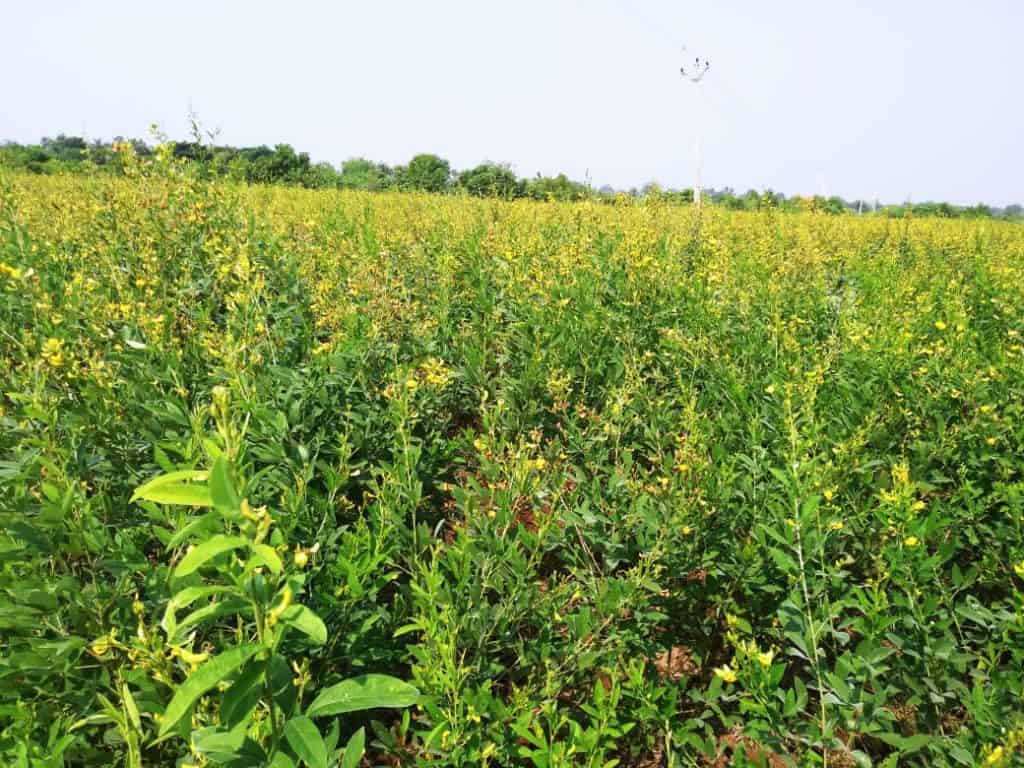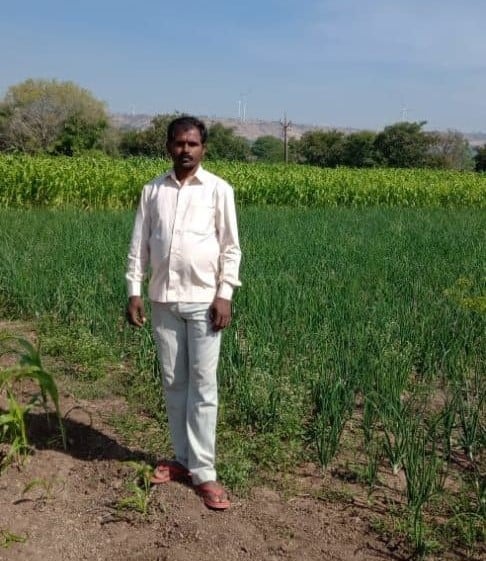The cloudy skies in recent weeks had Vijaykumar Lokhande scurrying to his fields in Mhada taluka in Solapur district. A page layout artist in the city at normal times, he also does farming to supplement his earnings.
“I grow pulses and millets like jowar in my five acres of land,” says Vijaykumar. “This year, I am growing tur dal and the excess rainfall helped tur. I have a job in Pune, so I decided to plant tur dal, which doesn’t require my daily presence”.
Pune city gets its vegetables, pulses and milk supply from Mulshi, Solapur, Satara, Baramati, Kolhapur etc. The Shree Chhatrapati Shivaji Market Yard at Gultekdi is where the tempos loaded with vegetables and other farm produce make their stop and then starts the business of auctioning the supplies to the highest bidder.
“The tempo drivers, usually work hand-in-glove with the traders and middlemen. The farmers’ role is limited to only growing the crop, weighing the yield and then transferring the goods to the tempo driver/middlemen and traders. The farmers can’t go to the market because there is daily work to be done in the fields, apart from looking after the livestock,” he adds.

But what about the initiatives that bring together the consumer and farmers and allows the former to buy farm fresh produce?
“I think they are misleading you,” says Shashikant Prabhune, a farmer from Baramati, who supplies cucumbers, tomatoes, fenugreek leaves and fruits like orange and sitaphal (custard apple) to the Pune market. “The people, who come to your housing society with vegetables is a middleman of some sort, not a farmer. And he ends up earning more than the farmer. Neither is the farmer benefiting nor are you buying vegetables at a lower rate, as you seem to think.”
Which becomes evident when you talk to consumers about their recent experience.
Food price inflation
Kavita Doshi, a teacher, was quite surprised to learn that she hasn’t been buying directly from farmers as she thought she was. “I was told that farmers are vending their goods at Nehru Chowk, near Mahatma Phule Mandi (a wholesale vegetable market),” says Kavita. “So I have been buying my vegetables and grains from them, which cost less than at the Mandi”.
And even then, Kavita has had to cut down on her family’s usage of onions when rates shot up in September-October. “We didn’t buy onions and instead experimented with food,” says Kavita. “For instance, we made koshimbirs (salads) without onions. We also cooked leafy vegetables only once a week, instead of twice or thrice a week. It’s difficult to eat only pulses and cereals.”
Bhoomi Choksi, who works as Manager-Admin in a yoga institute, cited the current rates: onion at Rs 65 per kg, sweet potatoes Rs 80 per kg and vegetables like cluster beans, ridge gourd at Rs 80 per kg. “Our budget has gone haywire since the lockdown,” adds Bhoomi. “I guess this applies to all middle class families who are struggling with job losses and pay cuts. I am cooking mostly grains and lentils. I have stopped making dishes which require onions and tomatoes.”
The budget pinch from the price rise in vegetables has hit most middle and low income families in the city. Jayashree Tilekar, a beautician, had no income during the lockdown. Now, her family of three is having to cut down drastically on once commonly used vegetables like onions. “When the prices of vegetables and fruits increased, we naturally cut down on our purchase,” says Jayashree. “On normal days we would require some 3 kg of onions, but when the prices went up, we just bought one or half kg”.
“The shortage of vegetable supply was due to transportation issues and that’s something we had to take in our stride,” said Aditi Apte, who can afford not to compromise on purchases despite the price rise. “We have always bought our supplies from Mahatma Phule Mandi, where the rates are a little lower. Everyone is facing hurdles and obstacles of some sort and we have to be sympathetic to farmers.”
Farmers, the ultimate losers
Climate change has further worsened the farmers’ plight. In Ranshingwadi village in Satara, this year 75% acreage was under onion cultivation, out of which 50% was destroyed due to excessive rains.
“When there is a good yield, of say onions, prices are low and our returns don’t even cover the expenses in terms of labour or buying fertilisers and pesticides,” says Deepak Chavan, who grows onions in Ranshingwadi. “It is a similar scene even when there is shortage in the market. The people who take advantage of price rise are the middlemen, not us.”
All the farmers are in the same boat, observes Aaba Patil, who grows pomegranates, grapes and vegetables like drumsticks in his seven acre plot. “Out of 1000 farmers, maybe one or two will do better,” says Patil. “Why do farmers end their lives? Because even after working hard, they don’t get enough money. For instance, traders pay us Rs 140 per kg for pomegranate, while he gets Rs 260 at the auction.”
“We have no organised body,” says Chavan when asked why farmers can’t come together. “You try to raise your voice and you are gagged. Right now, things are such that the farmers don’t have enough money to even recharge their mobile phone.”

Why can’t residents buy from farmers?
Given the present procurement and distribution system, the farmer cannot function without the middleman. Fruits and vegetables do not fall under the list of items identified by the government for procurement at minimum support price in the APMC mandis.
“Only a few farmers with marketing skills are able to bring what they grow to sell in Pune’s markets,” adds Abhijit Ghorpade, environment journalist and editor of Bhavatal, a magazine that focuses on weather, environment and water issues.
The Pune Municipal Corporation in association with Maharashtra State Agriculture Board initiated Athawade Bazaar or weekly bazaar with the intent to bring farmers and consumers together. The weekly markets were suspended during the lockdown but were reopened with social distancing norms. Some 60 locations within PMC limits were identified for setting up temporary stalls.
The union and state governments also launched some apps (see box) to bring growers and buyers on one platform and ensure fair price to both. The success of this experiment has been mixed.
The city has seen other efforts by citizens and groups to bridge the farmer-buyer gap. One such effort was the launch of The Conscious Community Market, or CoCo market in 2017, by Surabhi Ganguly and Tanya Kane, founder director for Goodbynature Pvt Ltd. Their focus, however, has been on going organic.
“When we started making an attempt to move towards an organic and sustainable lifestyle, we saw that there were several people making wonderful products but it was cumbersome to contact each person independently for a purchase and connect them to consumers,” says Ganguly. In the lockdown aftermath, CoCo has been primarily online (www.goodbynature.in). Their main focus was to get products from small and local producers. Farm products like grains, oils, vegetables, fruits, ghee, honey, etc are available at The CoCo Market.
The first reaction to The CoCo Market was very positive. “We found that buyers were happy to connect directly to the producer. In addition, we also have artisan soap makers, producers of household cleaning products, bamboo toothbrushes, upcycled plastic products, books from alternative publishers, stationery, nursery saplings, etc. We focused on items that would be needed on an everyday basis,” says the social entrepreneur.
But the organic food market is facing the same production, supply and distribution problems as other markets. “It’s a niche market,” says Abhijit Ghorpade. “Farmers need time to adapt to this scenario. In the past, they were urged to mechanise farming and use chemical fertilisers. Now we want them to grow ‘clean’ food. However, buyers have not turned to organic lifestyle and farmers will grow what there is a larger demand for.”
On their part, farmers say nothing is chemical-free now. “The food we grow is dependent on chemicals of some sort or the other,” says Deepak Chavan, a farmer from Satara district. “Even if we try to use organic manure and fertilisers etc, we are forced to use chemical fertilisers because of adverse climatic conditions. It is not feasible for farmers to grow chemical-free vegetables and fruits.”
Apps for farmers on mkisan.gov.in or Google play store
- Kisan Suvidha: This app has been developed to help farmers by providing relevant information on weather of current and next five days, market prices, agro advisories, plant protection, IPM practices etc.
- Pusa Krishi: This app is meant to inform farmers of different crops they can grow.
- MKisan: This app allows farmers and other stakeholders to obtain advisories from experts and government officials at different levels through mkisan portal without registering on the portal.
- Shetkari Masik: The app can be used to download Shetkari Masik magazine, one of the most popular agriculture monthly magazines published by the department of agriculture since its launch 1965.
- Crop Insurance: This app can be used to calculate the insurance premium for notified crops based on area, coverage amount and loan amount. The app also provides information on subsidy for any notified crop.
- AgriMarket: This is meant to provide market price of crops in the markets within 50 km of the device’s location capture by GPS. There is another option to get price at any market and any crop in case a person does not want to use GPS location.
(Info: sarkariyojana.com)